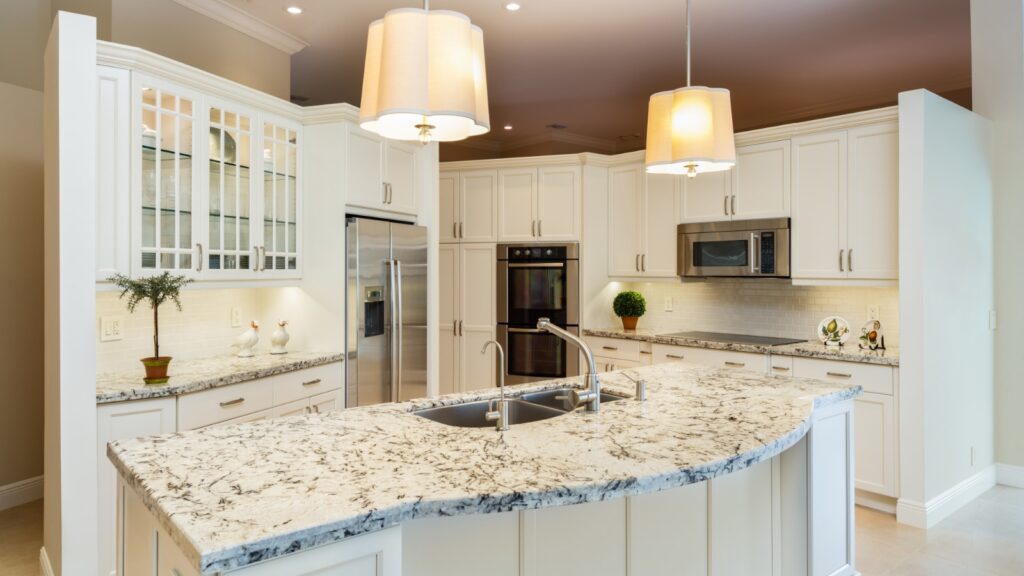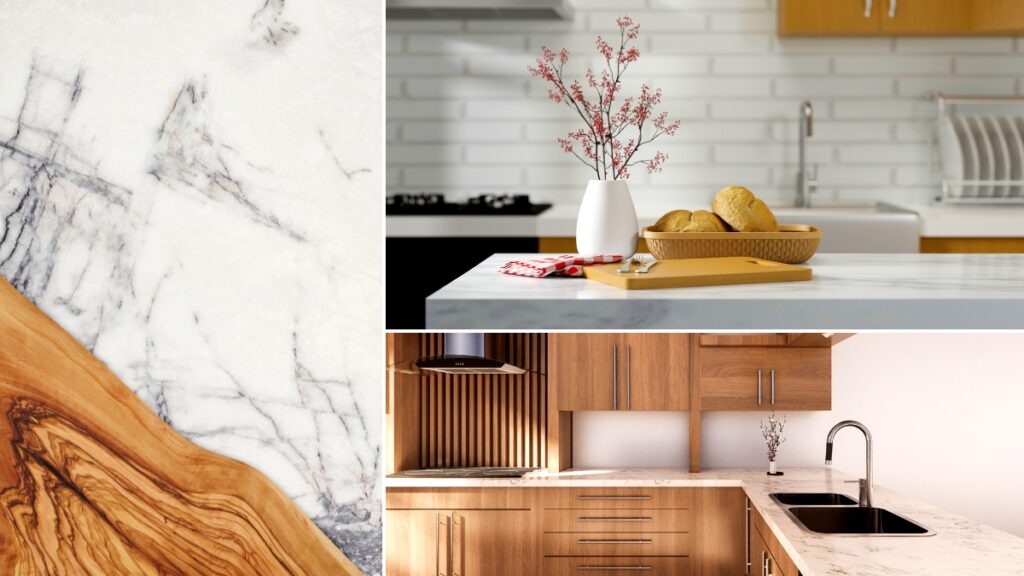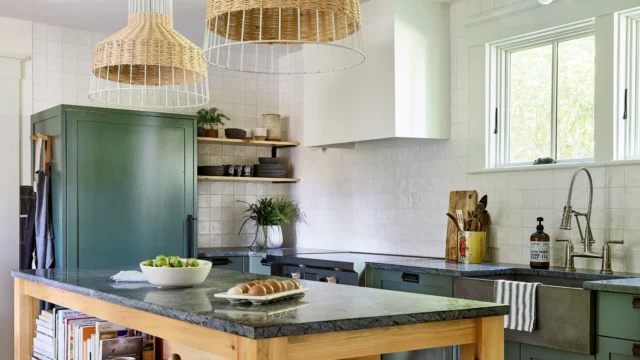With so many countertop materials available today, from natural stone and quartz to glass tiles and concrete, the options for customization are endless. An increasingly popular trend is mixing and matching different countertop materials within the same kitchen. Using multiple materials allows you to optimize specific areas based on form and function. With good planning and execution, mixing counters can take your kitchen design to the next level.
Mixing Materials by Zone
The people over at Bedrock Quartz say that the easiest place to start mixing kitchen countertops is by zone. Group similar tasks to common areas and select materials suited to those needs. For example, keep the messy prep zone near the sink separate from hygienic cooking zones.
Use water-resistant quartz or granite around the sink area for durable, no-fuss cleanup. In bake center prep zones, heat-safe surfaces like granite and soapstone hold up to hot pans without searing. At drink stations, easy-clean quartz or glass tile entertains without worry of wine stains. Having the right material where messes happen makes cleaning and care easier.
Vary Textures and Finishes

Don’t be afraid to explore different textures and finishes within the same material family. A polished white quartz island makes a smooth prep expanse, while rough-hewn blue quartz perimeter counters add dimensional drama. Differing stone finishes like honed limestone, leathered granite, and polished onyx provide visual interest.
Mixing gloss and matte ceramic or glass tiles as insets and mosaics creates artistic details. Concrete’s versatility also enables polished aggregate flows near raw cinderblock-like forms. Unify varied textures with complementary colors and visual flow. This adds designer panache to your kitchen scenery.
Create Focal Points
Installing a focal point material within neutral counters makes it pop. Picture a gleaming red glass tile backsplash against matte white quartz counters. Use it to highlight steps in the kitchen work triangle, guides to key appliances, or plating stations.
Small inlays of special materials also draw the eye, like a copper prep sink within oak cabinetry. Metallic mosaic bands separating countertop materials define the transition in dazzling fashion. Such purposeful details lend your kitchen character.
Consider Functions
Besides visual appeal, adapt materials to functional needs. For example, raw wood counters warm up drink mixing stations but fare poorly with spills. Heat-safe soapstone maximizes bake center durability surrounding your wall oven. Slip-resistant quartz works best bordering a prep sink as you transition between wet and dry tasks. Ensure performance matches purpose.
Tying Disparate Pieces Together
With varied materials installed, tying the whole kitchen together visually is also vital. Unified edges and matching cabinetry maintain flow. Consistent caulking colors erase obvious counter divides. Strategic lighting highlights sculptural details so no section feels disconnected. It’s designing your kitchen like a gallery, with each material as art that contributes to the overall exhibit.
Consult the Experts

Executing a beautifully cohesive yet functional mix-and-match kitchen requires expertise that spans design, fabrication, installation, and maintenance. Consult qualified designers to conceive the vision, considering everything from safety codes to undercounter structural needs. Allow qualified fabrication shops adequate design time for precision cutting and fitting. Hire experienced installers to seamlessly integrate all elements based on material needs. Maintaining your investment also requires knowing the proper care regimens for each surface. Investing in expertise ensures your unique artisan kitchen realizes its full potential.
Conclusion
Approaching kitchen counters with an artistic eye and optimizing function by zone enables home chefs to create their dream workspace. From sleek contemporary pairings to rustic industrial juxtapositions, the combinations are endless. Mix, match, and design the ideal countertops tailored exactly to how you cook.



